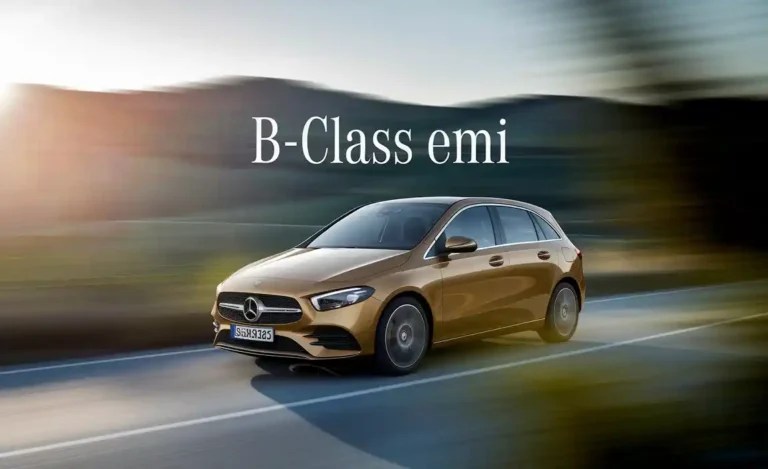B Class Android Auto: Perfect, Effortless Integration
B Class Android Auto integration provides a seamless connection between your Mercedes-Benz B-Class infotainment system and your Android smartphone, offering intuitive access to navigation, music, and communication features without taking your eyes off the road. This guide ensures effortless setup for a safer, more connected driving experience.
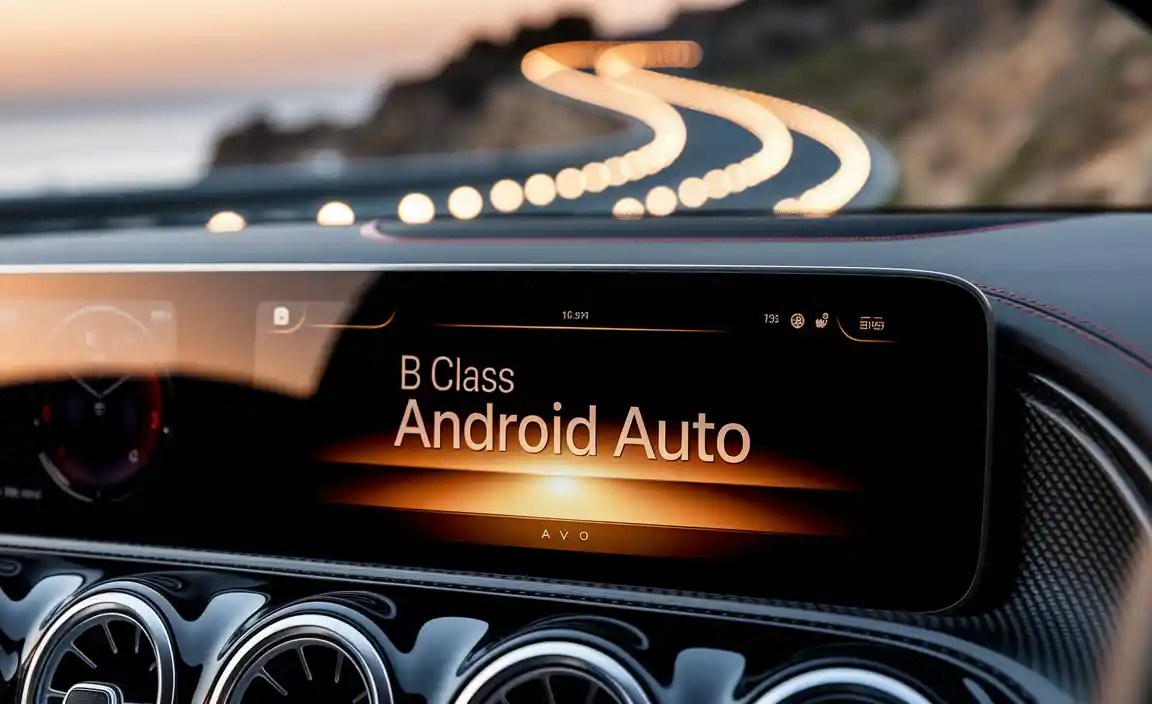
Driving your Mercedes-Benz B-Class should be an experience, and that includes staying connected in a smart, safe way. Many of us rely on our smartphones for navigation, music, and staying in touch. Android Auto is designed to bring those essential apps right to your car’s display. But sometimes, getting it to work perfectly can feel a bit tricky. Don’t worry, we’re here to guide you through making your B-Class and Android Auto sync up effortlessly. We’ll cover everything you need to know for a smooth, frustration-free connection.
What is Android Auto and Why is it Brilliant for Your B-Class?
Android Auto is essentially a simplified version of your Android smartphone’s interface, projected onto your Mercedes-Benz B-Class’s infotainment screen. It’s not just about mirroring your phone; it’s about intelligently adapting your apps for a driving environment. Think large icons, simplified menus, and voice-command focused operation. The goal is to minimize distractions while maximizing convenience.
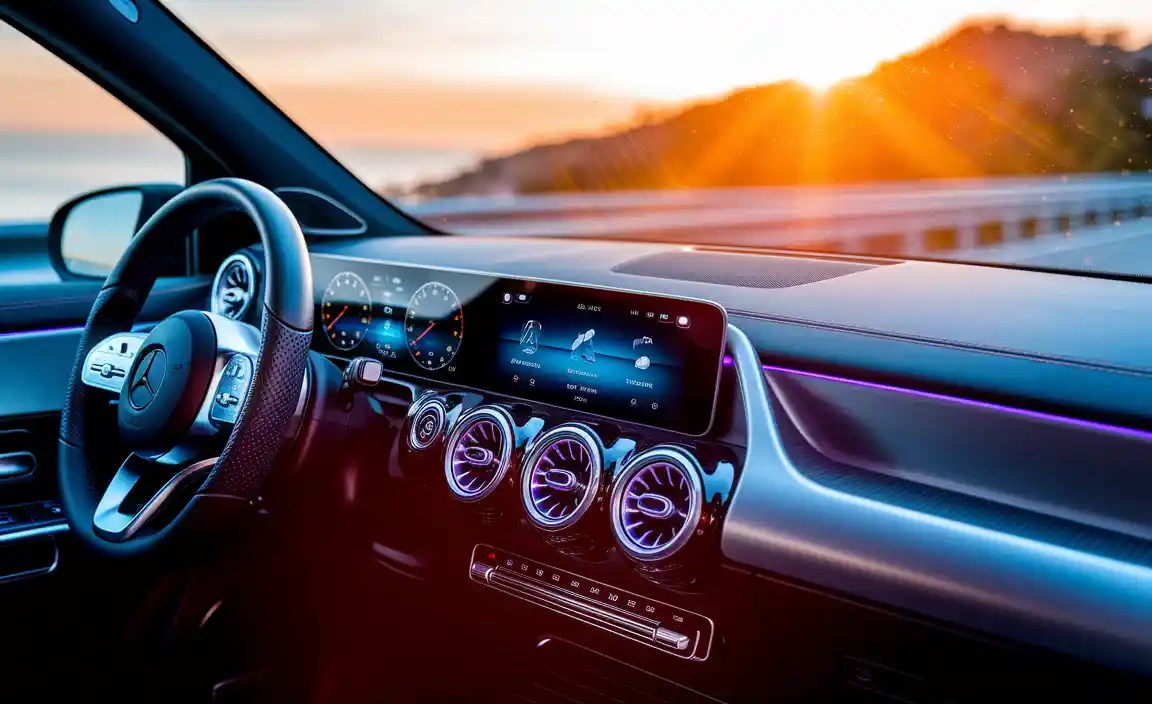
For B-Class owners, Android Auto transforms their already sophisticated luxury compact into a more connected hub. Whether you’re navigating busy city streets, discovering new routes on a road trip, or simply need to make a hands-free call, Android Auto integrates these tasks seamlessly. It leverages Google’s powerful navigation (Google Maps or Waze), music streaming services (Spotify, YouTube Music), and messaging apps (WhatsApp, SMS) in a standardized, easy-to-use format.
The benefits are significant for anyone who uses their B-Class for daily commutes, weekend getaways, or anything in between. It enhances safety by reducing the need to fiddle with your phone, improves the driving experience by providing access to your favorite entertainment and information, and keeps you productive without compromising your focus on the road.
Getting Started: The Essential Requirements
Before you can enjoy the seamless integration of Android Auto in your Mercedes-Benz B-Class, there are a few fundamental requirements. Ensuring these are met will make the setup process much smoother. It’s about getting the right tools and having the right “ingredients” ready.
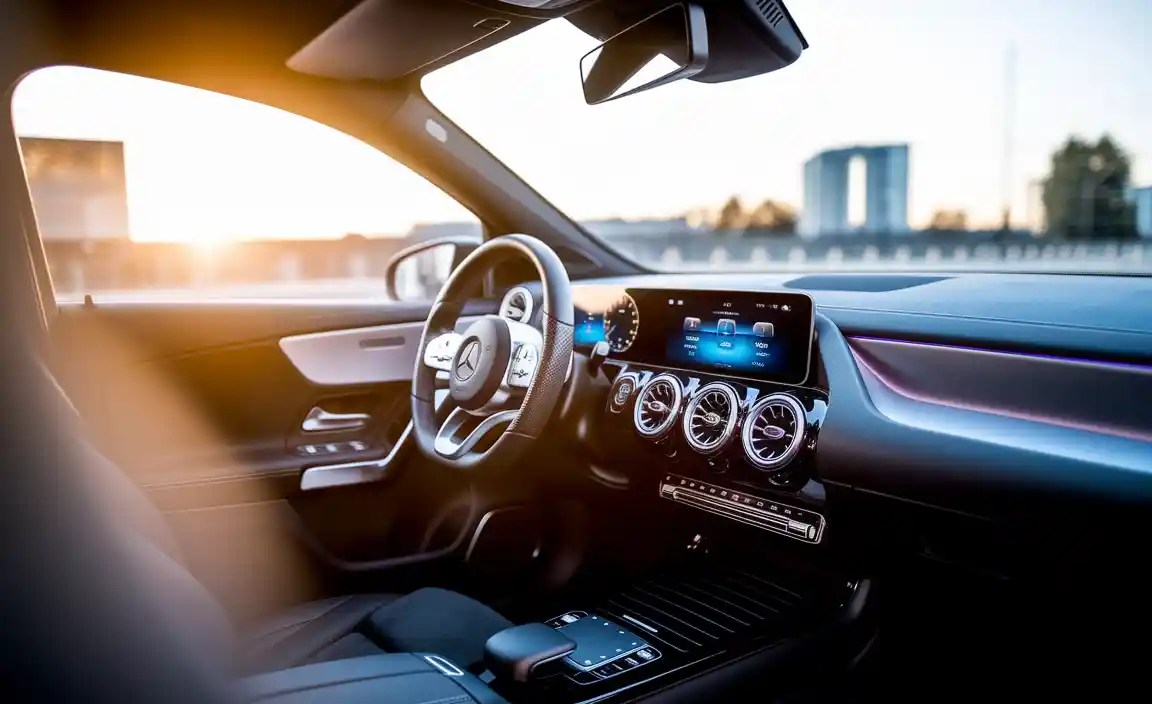
Your Android Smartphone
Not all Android phones are compatible, and operating system versions matter. Ensure your smartphone meets the following criteria:
- Android Version: Generally, you’ll need Android 6.0 (Marshmallow) or later. Always check the latest requirements from Google, as these can evolve. You can typically find this information on Google’s official Android Auto support pages.
- Data Connection: Android Auto requires an active internet connection for many of its features, such as live traffic updates, music streaming, and searching for destinations.
- Storage Space: While Android Auto itself doesn’t take up much storage on your phone, the apps you want to use through it (like Google Maps, Spotify, etc.) will. Ensure you have sufficient free space.
Your Mercedes-Benz B-Class
Your B-Class needs to be equipped to support Android Auto. Most newer B-Class models come with this functionality built-in, but it’s always best to confirm.
- Infotainment System Compatibility: Check your B-Class owner’s manual or the Mercedes-Benz infotainment system specifications for confirmation of Android Auto support. You can also check the vehicle’s build sheet or VIN decoder.
- Software Updates: Ensure your car’s COMAND or MBUX infotainment system has the latest software updates installed. Your Mercedes-Benz dealer can assist with this if needed.
- USB Port: You’ll need a functional USB port in your B-Class to connect your smartphone. Some cars have multiple ports; usually, the one designated for media or phone connection is best.
The Right USB Cable
This is more crucial than many people realize. A faulty or low-quality USB cable can cause connection issues, dropped connections, or simply prevent Android Auto from launching.
- High-Quality Cable: Opt for a reputable brand and a cable that supports data transfer, not just charging. Many cheap, unbranded cables are designed for charging only, or have thinner wires that struggle with the data demands of Android Auto.
- Short is Often Better: Shorter, high-quality cables (around 0.5 to 1 meter) are generally more reliable for car connections.
- Inspect for Damage: Ensure the cable isn’t frayed or damaged, as this can lead to persistent problems.
Step-by-Step Guide: Connecting Android Auto in Your B-Class
Once you have all your requirements in order, connecting Android Auto is usually a straightforward process. Follow these steps for a successful integration.
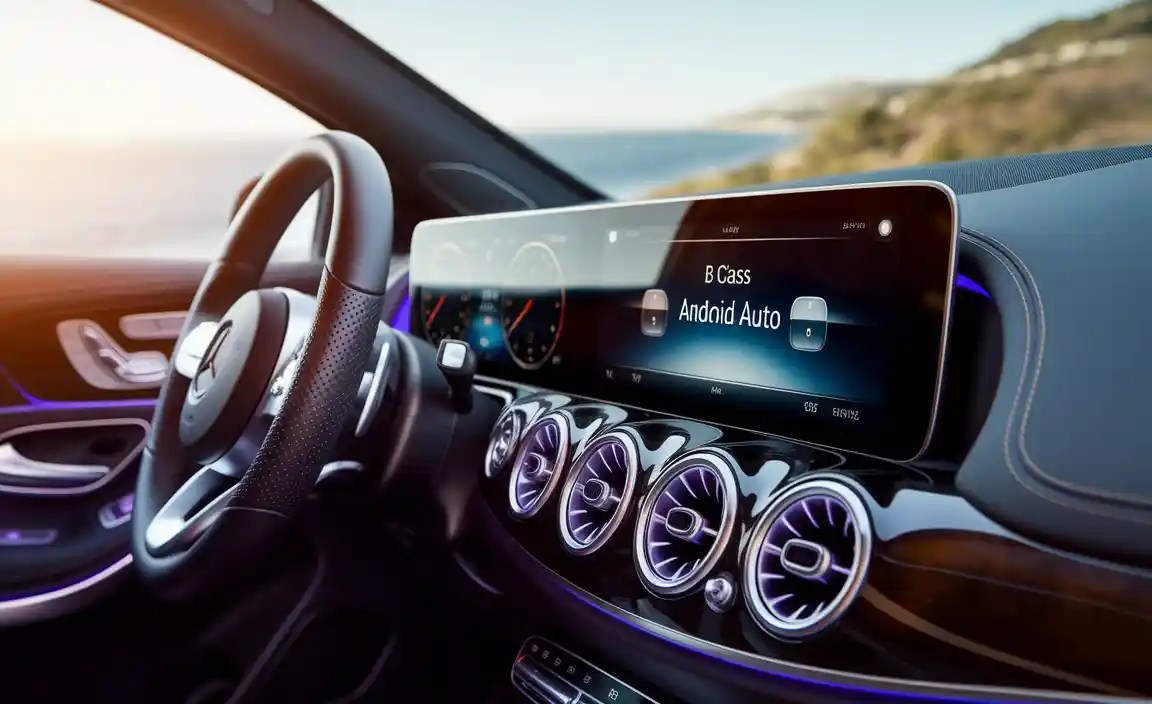
Step 1: Prepare Your Phone and Car
Before you plug anything in, take a moment to prepare:
- Download the Android Auto App: If you’re on an older Android version (pre-Android 10), you might need to download the Android Auto app from the Google Play Store. For Android 10 and later, Android Auto is usually built into the operating system and can be accessed via your phone’s settings.
- Enable USB Debugging (Optional, but Recommended for Troubleshooting): While not always strictly necessary for initial setup, enabling USB debugging in your phone’s developer options can sometimes help resolve persistent connection issues. To do this, go to Settings > About Phone and tap “Build Number” seven times rapidly. Then, go back to Settings > System > Developer Options and toggle “USB debugging” on.
- Start Your Car: Turn your B-Class on so the infotainment system is active.
Step 2: Connect Your Phone via USB
This is the physical link between your phone and your car.
- Plug In the USB Cable: Connect one end of your high-quality USB cable to your Android smartphone and the other end to the designated USB port in your Mercedes-Benz B-Class.
- Unlock Your Phone: Ensure your phone is unlocked when you plug it in. Many security protocols prevent data access when the phone is locked.
Step 3: Grant Permissions on Your Phone
Your phone will likely prompt you for several permissions. These are necessary for Android Auto to function correctly.
- Android Auto Prompts: You should see notifications or pop-ups on your phone asking if you want to allow Android Auto to access messages, calls, location, etc. Grant these permissions to enable full functionality.
- “Start app automatically”: You might be asked if you want Android Auto to start automatically when connected. It’s generally convenient to allow this for your B-Class.
- “Always allow from this car”: For an even more effortless experience, select the option to always allow Android Auto to connect with this vehicle.
Step 4: Initialize Android Auto on the Car’s Display
Your B-Class’s infotainment screen should now recognize your connected phone.
- Infotainment Screen Prompt: Your Mercedes-Benz COMAND or MBUX system will likely display a message indicating that a phone is connected and asking if you wish to use Android Auto. Select “Yes” or “Accept.”
- First-Time Setup: For the very first connection, your car’s system and phone will go through a brief setup process. Follow any on-screen prompts. This might involve confirming a code displayed on both your phone and the car screen.
- Loading the Interface: After successful setup, the Android Auto interface will appear on your B-Class’s main display.
Step 5: Explore and Use Android Auto
You’re now connected! Familiarize yourself with the interface.
- Navigation: Tap the navigation icon (often a compass or map symbol) to launch Google Maps or Waze. You can search for destinations using the on-screen keyboard or, more importantly, via voice command.
- Music and Audio: Access your favorite music apps by tapping the corresponding icons. Play, pause, skip tracks, and control volume easily.
- Communication: Make and receive calls, or send and receive text messages using voice commands. Your contacts will be accessible, and messages can be read aloud to you.
- Voice Commands: The microphone icon is your key to hands-free operation. Simply tap it and say “Hey Google” or press and hold the microphone button on your steering wheel (if configured) and speak your commands. This could be anything from “Navigate to the nearest coffee shop” to “Play my workout playlist.”
Optimizing Your Android Auto Experience in the B-Class
Once connected, there are ways to make your Android Auto experience even better, ensuring it’s not just functional but truly a pleasure to use.
Customize Your Apps
Android Auto allows you to choose which apps appear on its interface. You don’t want a cluttered screen; you want quick access only to what you use most.
- In Your Phone Settings: Go to your phone’s Android Auto settings (usually under Connected Devices or System). You’ll find an option to customize the apps displayed within Android Auto.
- Hide Unused Apps: Deselect any apps you don’t plan to use while driving. This streamlines the interface considerably.
- Prioritize Favorites: Ensure your most-used navigation, music, and communication apps are at the front.
Leverage Voice Commands
This cannot be stressed enough: voice commands are your best friend with Android Auto.
- Steering Wheel Integration: Most Mercedes-Benz B-Class models include buttons on the steering wheel for voice control. Pressing this dedicated button will activate Google Assistant without needing to touch your phone or the car’s screen. Learn to trust this – it’s far safer than manual input.
- “Hey Google”: If your phone’s microphone is active for “Hey Google” detection, you can often activate the assistant just by saying the hotword, even if your phone isn’t physically mounted in a way that makes this easy to see.
- Practice Makes Perfect: Experiment with different commands. You can ask for weather updates, set reminders, control smart home devices if linked, find specific songs, and much more – all hands-free.
Keep Your Phone and Car Updated
Both your smartphone and your B-Class’s infotainment system receive periodic updates that can improve Android Auto performance, add new features, and fix bugs.
- Phone Software: Regularly check for and install operating system updates on your Android phone. You can usually find this in Settings > System > System Update.
- Car Infotainment: For your B-Class, software updates for the COMAND or MBUX system are typically handled by your Mercedes-Benz dealership. Inquire during a service visit if you suspect performance issues or are curious about new features. Keeping your car’s software current is a good practice for overall vehicle health and functionality, similar to maintaining your vehicle’s fluid levels.
Troubleshooting Common Issues
Even with the best setup, you might occasionally encounter hiccups. Here are solutions to some common Android Auto problems in the B-Class.
Connection Fails or Drops Intermittently
This is often the most frustrating problem. Here’s what to check:
- The USB Cable: As mentioned, this is the number one culprit. Try a different, high-quality USB cable. Even a good cable can fail over time.
- USB Port: Try a different USB port in your car if one is available. Ensure the port is clean and free of debris.
- Phone Restart: A simple restart of your Android phone can often resolve temporary glitches.
- Car Infotainment Restart: Some Mercedes-Benz systems allow for a soft reset of the infotainment system. Consult your owner’s manual or try holding down the power button of your infotainment display for an extended period.
- Check App Permissions: Re-verify that all necessary permissions for Android Auto are granted on your phone (Settings > Apps > Android Auto > Permissions).
- Clear Cache: On your phone, go to Settings > Apps > Android Auto > Storage & Cache and tap “Clear cache.” You can also try “Clear storage” but be aware this will reset Android Auto settings.
Android Auto Doesn’t Appear on the Screen
If your phone is connected but nothing shows up:
- Car System Timeout: Sometimes, the car system might not register the connection immediately. Unplug and replug your phone after a few seconds.
- Android Auto Disabled in Car Settings: Ensure Android Auto hasn’t been accidentally disabled within your B-Class’s infotainment settings. Look for options under “Phone Projection” or “Connectivity.”
- Phone OS Update Issue: Very rarely, a recent phone operating system update might introduce an incompatibility. Check online forums or Google’s support pages for known issues.
Voice Commands Not Working
If Google Assistant isn’t responding:
- Microphone Permissions: Double-check microphone permissions for Android Auto and Google Assistant on your phone.
- “Hey Google” Sensitivity: Ensure “Hey Google” detection is enabled and functioning correctly on your phone when it’s unlocked.
- Steering Wheel Button Connectivity: If the steering wheel button isn’t activating anything, there might be a separate connectivity issue between the button and the car’s system. This might require a dealer visit.
Android Auto vs. Apple CarPlay in the B-Class
Many drivers facing integration choices wonder about the alternatives. In the Mercedes-Benz B-Class, the choice for smartphone integration often comes down to Android Auto or Apple CarPlay. Both offer similar core functionalities – navigation, music, communication, and safety features – adapted for the car interface. The fundamental difference lies in the ecosystem; Android Auto is for Android users, and Apple CarPlay is for iPhone users.
Both systems are designed to be intuitive and safe. However, the specific apps available and their interface designs can differ slightly. Google Maps and Waze are often favored for their real-time traffic data by Android Auto users, while Apple’s Maps has improved significantly. Music apps like Spotify and YouTube Music are available on both, as are podcast and audiobook apps. The choice is primarily based on the smartphone you own and prefer. For B-Class owners, the Mercedes-Benz infotainment system is engineered to provide an excellent experience regardless of which platform you choose, provided your phone is compatible.
Here’s a quick comparison:
| Feature | Android Auto | Apple CarPlay |
|---|---|---|
| Smartphone Compatibility | Android Phones (Android 6.0+) | iPhones (iPhone 5 and later) |
| Navigation Apps | Google Maps, Waze (primary), others | Apple Maps, Google Maps, Waze, others |
| Voice Assistant | Google Assistant | Siri |
| Music Streaming | Spotify, YouTube Music, Pandora, etc. | Apple Music, Spotify, Pandora, etc. |
| Messaging | SMS, WhatsApp, Telegram, etc. | iMessage, SMS, WhatsApp, etc. |
| Car Integration | Seamless with compatible Mercedes-Benz systems | Seamless with compatible Mercedes-Benz systems |
Frequently Asked Questions About B Class Android Auto
- Do all Mercedes-Benz B-Class models support Android Auto?
- Most B-Class models manufactured from around 2016 onwards come with Android Auto capability. However, it’s always best to confirm with your car’s specific trim level and year by checking your owner’s manual or consulting a Mercedes-Benz dealership.
- Can I use Android Auto wirelessly in my B-Class?
- Wireless Android Auto functionality depends on both your B-Class’s infotainment system and your Android smartphone’s capabilities. Newer B-Class models with the latest MBUX system, and compatible smartphones, can support wireless connections after an initial wired setup to pair them. Check your car’s specifications and your phone’s manual for wireless support.
- Is Android Auto free to use?
- Yes, Android Auto itself is a free feature provided by Google. However, using many of its functions, such as navigation with live traffic and streaming music, requires an active data connection on your smartphone, which may incur data charges from your mobile carrier.
- What is the best USB cable for Android Auto?
- For the most reliable connection, use a high-quality, short (0.5-1 meter) USB cable from a reputable brand that explicitly supports data transfer. Cables rated for fast charging often also have robust data capabilities. AmazonBasics, Anker, and Belkin




